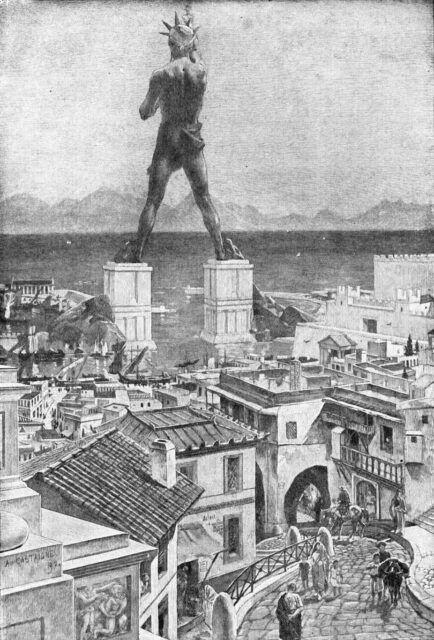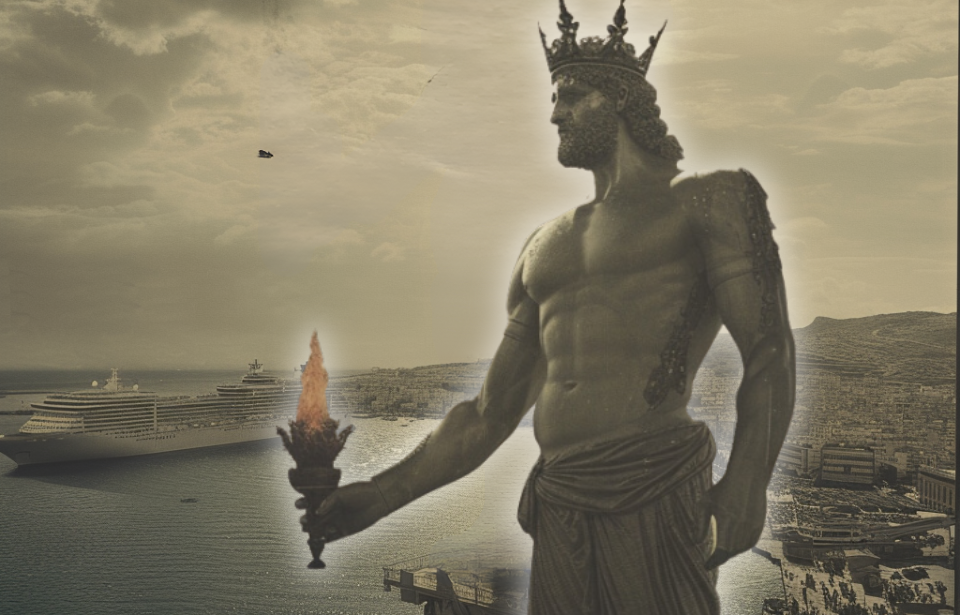In the annals of ancient wonders, few have captured the imagination quite like the Colossus of Rhodes – A Marvel of Ancient Engineering. Standing tall over the island of Rhodes in Greece, this gigantic statue not only served as a symbol of victory but also as a testament to the ingenuity and artistic prowess of the ancient Greeks. The Colossus of Rhodes wasn’t just a marvel of its time; it continues to inspire awe and curiosity even today.
The story of the Colossus begins in the aftermath of a siege

In 305 BC, Rhodes was under siege by Demetrius Poliorcetes. However, the Rhodians successfully defended their city. To celebrate their victory and to showcase their strength, they decided to build a giant statue of their patron god, Helios.
The construction was funded by selling the siege equipment left behind by Demetrius’s fleeing army. This act of turning tools of war into a symbol of peace and prosperity is a fascinating tale of resilience and resourcefulness.
The construction of the Colossus was an engineering feat

Led by the sculptor Chares of Lindos, the statue took twelve years to complete, from 292 to 280 BC. It was made of iron tie bars and brass plates, with stone blocks used for the base. The statue stood approximately 33 meters high, making it one of the tallest statues of the ancient world.
The construction techniques used were revolutionary, involving complex scaffolding and the careful placement of massive bronze plates. The ingenuity involved in its construction remains a topic of study and admiration among historians and engineers alike.
Unfortunately, the Colossus of Rhodes did not stand the test of time

In 226 BC, the statue was destroyed by an earthquake, breaking at its weakest point—the knees. Despite offers from various rulers to rebuild it, the Rhodians declined, believing it to be a sign of hubris to rebuild something the gods had destroyed.
The ruins lay on the ground for over 800 years, a testament to its former glory. It wasn’t until the 7th century AD that the remains were finally sold off by invading forces. The story of its fall, as much as its construction, adds a layer of tragic beauty to the legend of the Colossus.
The legacy of the Colossus of Rhodes transcends its physical existence

It was one of the Seven Wonders of the Ancient World, a list compiled by ancient Greek historians that included the most remarkable creations of classical antiquity. Today, the Colossus continues to inspire art, literature, and even modern engineering projects.
Read more: Greek and Roman Statue Heads Unearthed in Knidos
The Colossus of Rhodes may no longer stand, but its story endures. It serves as a powerful symbol of the triumphs and tragedies that are part of our collective human history. The tale of the Colossus, with its blend of history, myth, and inspiration, continues to fascinate and inspire, making it a timeless wonder of the ancient world.
